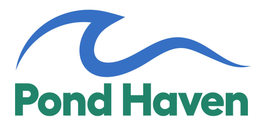
Keeping a pond healthy and vibrant starts with proper aeration. Aeration improves water quality, reduces muck build-up, and promotes a balanced ecosystem.

As winter approaches, it's crucial to prepare your pond fountain to ensure it stays in good condition through the cold months. Winterizing a pond fountain for sale h...
Read more
When it comes to maintaining a healthy pond, aeration is key. While traditional electrical pumps are effective, they are not always feasible, especially in remote areas. Harnessing natural ...
Read more
When pondering the question of when a pond becomes a lake, it becomes essential to understand the variables at play. Bodies of water are often categorized based on size, depth, and ecology.

Cleaning a pond filter is essential for maintaining clear and healthy pond water. Pond filters trap debris, algae, and other impurities, ensuring your pond remains a beautiful and thriving ecosystem. Regular maint...
Read more
Choosing the right size aerator for pond a 1-acre pond is essential for maintaining water quality and supporti...
Read more
Aeration is a crucial component for maintaining a healthy pond ecosystem. By boosting the oxygen levels in the water, aeration supports fish, plants, and beneficial bacter...
Read more
A pond aerator is an essential tool for maintaining a healthy pond ecosystem. By adding oxygen to the water, a pond aerator supports the Read more

Aerating a pond is essential for maintaining its health and balance. Proper aeration improves water quality, breaks down organic debris, and keeps the ecosystem thriving. Whether you ...
Read more
When designing a pond, one critical factor often overlooked is its depth. While the aesthetic appeal of a pond is significant, the depth plays a pivotal role in its functionality and ecological balance. A pond with an adequate depth ensures th...
Read more